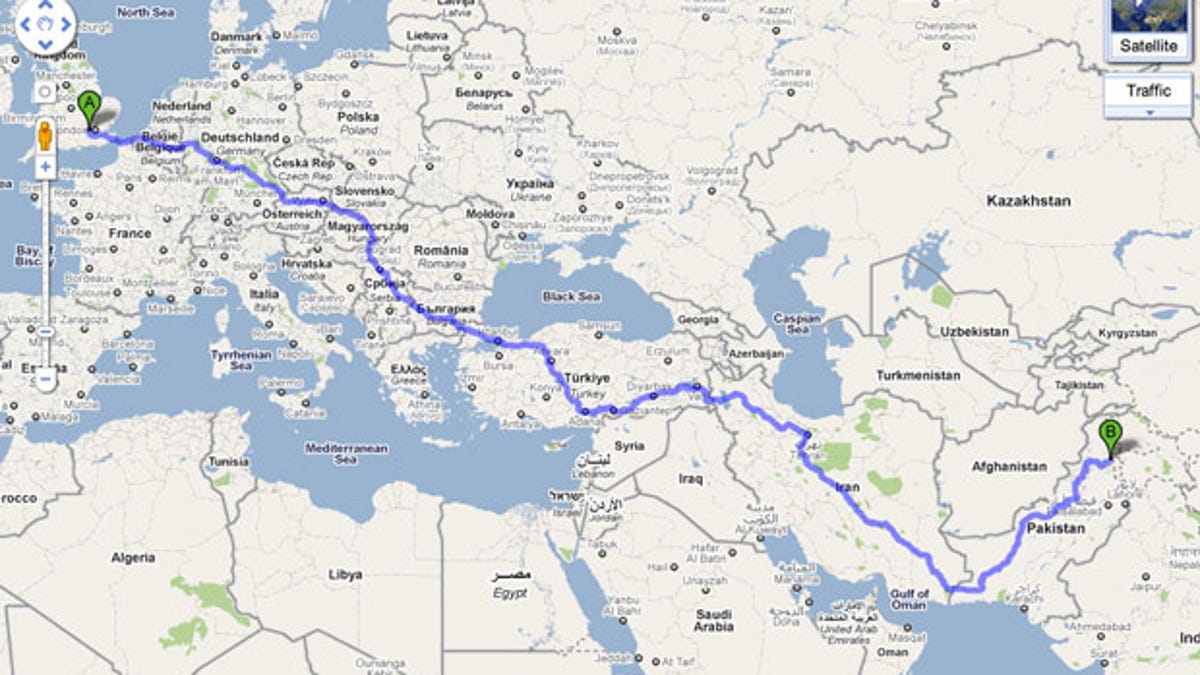Pakistan seen from afar: Why tech still amazes me
When technology opens a link from a quiet existence in rural England to the attack on Osama bin Laden, sometimes even hardened technophiles stop taking tech for granted.

Indulge me here for a minute while my mind boggles.
I spend a lot of time looking at the latest technology, so I live in a perpetual state of low-grade future shock. Yesterday, though, was one of those days when I was floored by how far things have progressed.
First, I asked for and received satellite photos taken that morning of Osama bin Laden's compound in Abbottabad, Pakistan. Then, in about 10 seconds, I got directions on how to drive there from my house in Old Windsor, England, in 4 days and 16 hours.
These moments created a vivid, concrete, personal connection between my life in a sleepy corner of England with a violent, historic military operation a quarter of the way around the world. I'm used to maps of foreign lands illustrating news reports, but this was in another league.
What did it take to make it all happen? The list is endless, but here are a few of the remarkable elements that I fear I take for granted most of the time:
• A high-speed Internet connection that reaches me in off-the-beaten-track England.
• Not one but two companies--DigitalGlobe and GeoEye--that sell satellite imagery not just to intelligence agencies but also to private-sector companies such as Google and Microsoft.
• The fact that these companies could direct their satellites to take photos of a specific patch of Pakistan that day, with a resolution fine enough to see features on buildings.
• Google's geographic database that not only includes a road network spanning Western and Eastern Europe, the Balkans, Turkey, Iran, and Pakistan, but that is clever enough to pick a route across that network and judge how long it would take to drive it.
• Communications technology--e-mail, Yahoo's Flickr, and the age-old FTP standard--that let me request the photos from companies in the United States and let the companies deliver them to me a few hours later.
• Image-editing software that let me composite and otherwise prepare some unwieldy photos for publication on an online news site.
• My employer's Internet-based publishing system, which brought those photos to anyone in the world with a Web browser.
And that doesn't include TCP/IP, microprocessors, image sensors, optics, data storage, wireless networking, or encrypted communications. Like I say, the list is endless.
Several times a day, I appreciate what technology can help me accomplish. At about half that frequency, I curse its shortcomings: we're perpetually upgrading to new products and services that introduce new problems even as they solve old ones. Happily, the benefits outweigh the drawbacks, for me.
But my appreciation yesterday took a different form. For a moment, as I peered down from space, all that technology twined into a single strand that linked me to a patch of ground north of Lahore, a few hundred square meters on which the United States concentrated its collective wrath.
I spend much of my professional and personal life in a virtual realm, immersed in online communities that span geographic boundaries. Yesterday, the same technology that permits that ethereal existence also showed how effectively it can ground me to the physical world.

